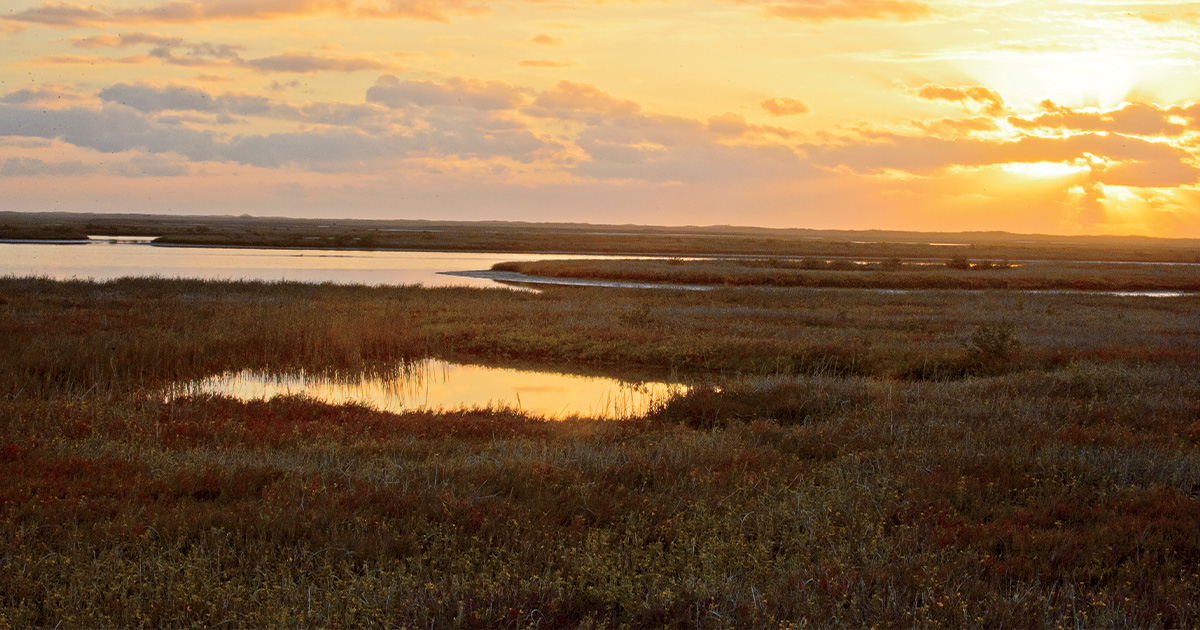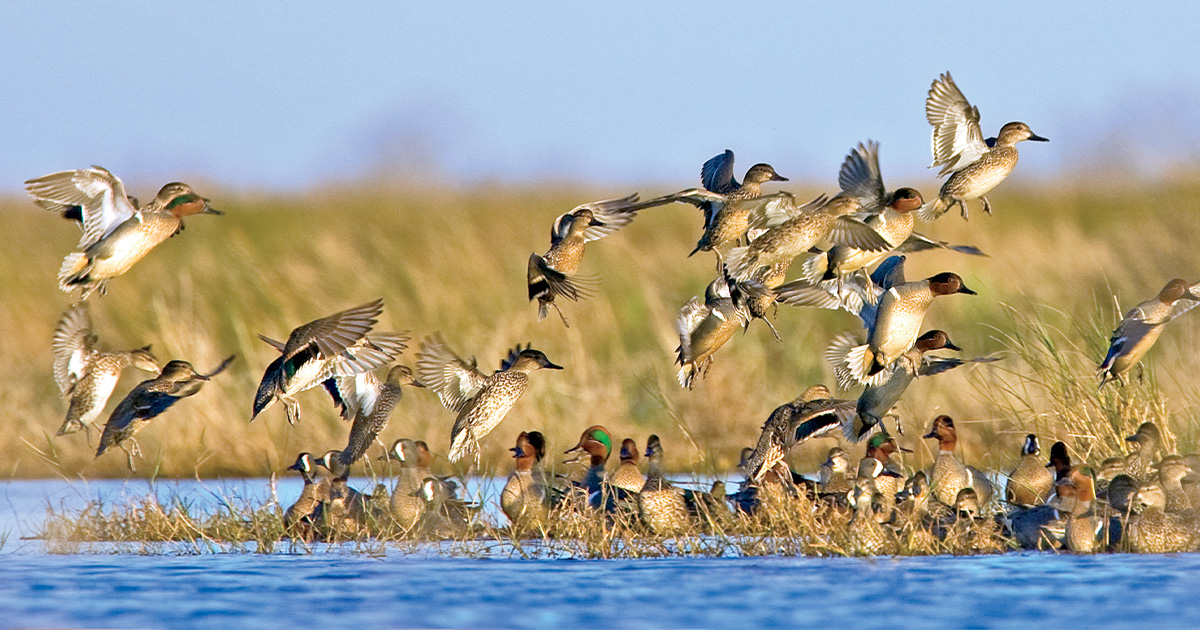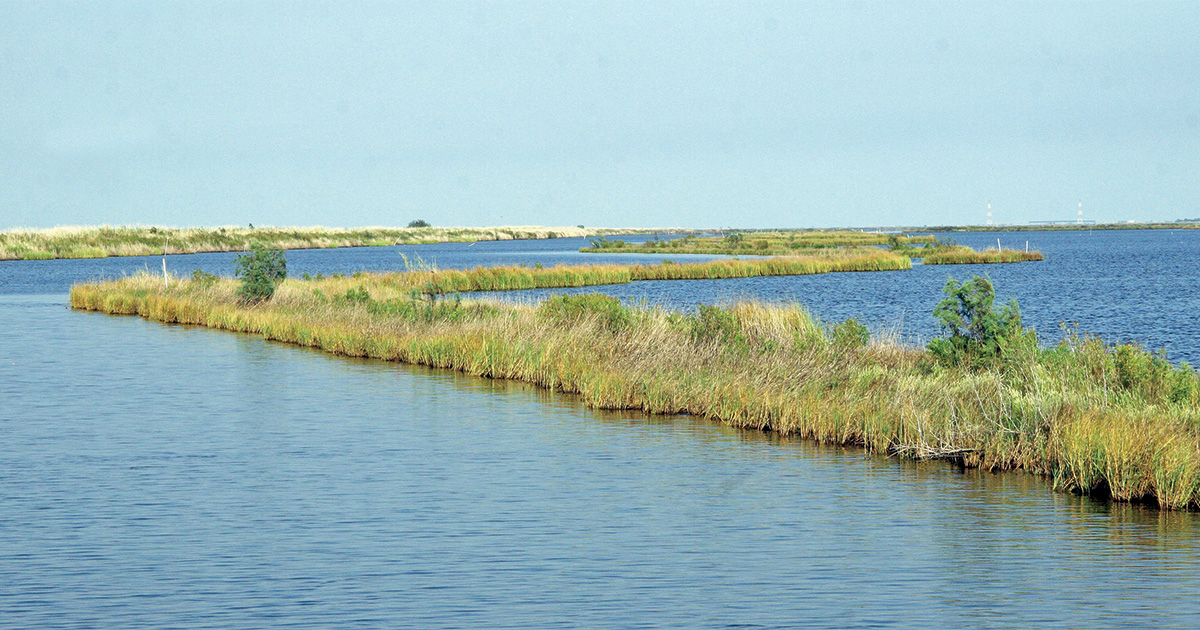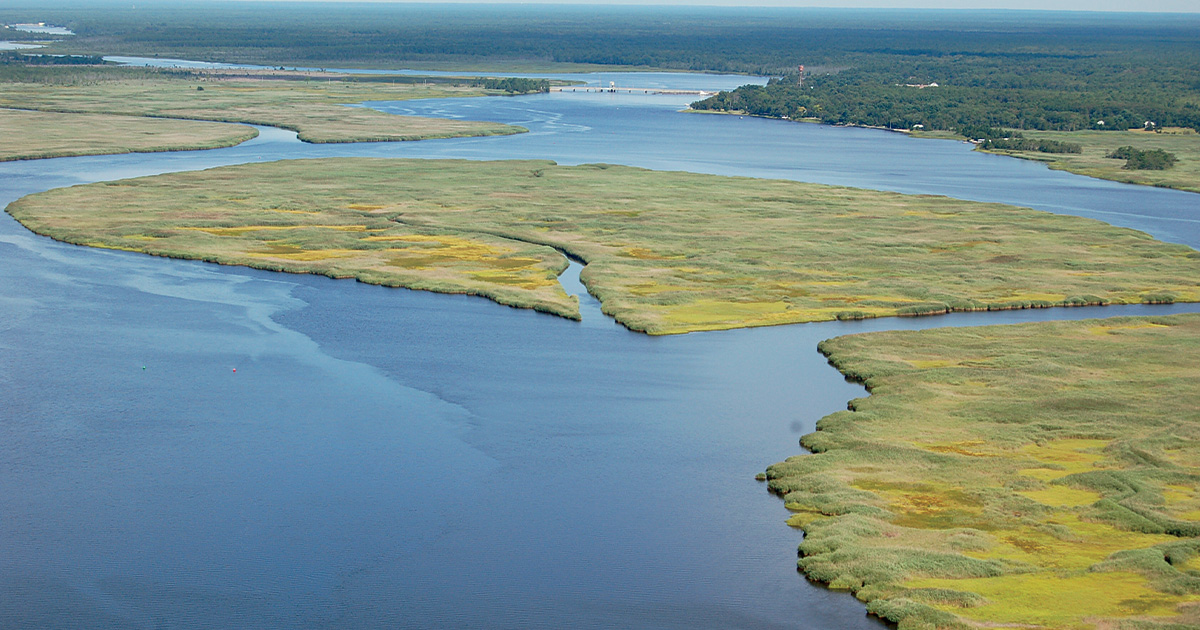Conservation on the Coasts
Restoring coastal wetlands is a high priority for Ducks Unlimited on key waterfowl migration and wintering areas
Restoring coastal wetlands is a high priority for Ducks Unlimited on key waterfowl migration and wintering areas
By Michael Brasher, PhD, Greg Green, Jamie Rader, and Mike Carloss

Expansive tracts of wetlands along North America's Atlantic and Pacific coasts, Gulf of Mexico, and Great Lakes and their associated bays, lakes, and lagoons support a great abundance and diversity of waterfowl, especially during the migration and wintering periods. Additionally, these coastal wetlands serve as vital habitat for numerous fish and shellfish species; provide outdoor recreation for millions of people; support local, regional, and national economies; and offer storm protection for coastal communities and economic infrastructure.
Despite their immense value to people and wildlife, coastal wetlands are among North America's most threatened habitats. Thousands of square miles of marsh have already been lost or degraded, and remaining coastal wetlands continue to be impacted by development, subsidence, saltwater intrusion, and sea-level rise. Consequently, the protection and restoration of coastal wetlands is among DU's highest priorities. Following are some of the techniques that DU and our partners are using to help conserve these crucial waterfowl habitats.
Coastal impoundments are most common along the Gulf and Atlantic coasts. Some of these managed wetlands were created long ago for agricultural purposes, such as those on former rice plantations along the South Carolina coast, while others were built more recently to protect marshes from the damaging effects of high salinity, subsidence, or prolonged high water levels. The flow of water in and out of these impoundments is regulated by water-control structures, gates, and pumps to mimic natural cycles and to provide optimal habitat for waterfowl and an array of other wildlife. While these impoundments are artificially managed habitats, in many cases they are the only realistic means of preserving the functions and values of freshwater marshes on highly altered coastal landscapes.

Coastal wetlands provide crucial habitat for teal and a variety of other waterfowl.
In areas where the natural hydrology has been altered, physical structures are sometimes used to reduce the flow of salt water into marshes, where it can cause erosion and prevent the growth of beneficial submersed aquatic plants. The most commonly used structures are box and culvert designs fabricated from corrosion-resistant materials and large stone weirs strategically placed across tidal channels below mean low-tide levels. These structures help reduce artificially high salinity levels in coastal wetlands, thereby supporting a more diverse and productive marsh community. Because coastal marshes serve as nurseries for many species of fish and shellfish, the structures are carefully designed to allow aquatic species to move freely in and out of the marsh. For anadromous fish species such as salmon, the structures allow juvenile fish to leave the marsh on their way to the ocean, while adult fish can return to the wetlands to spawn. Saltwater-control structures of this type are most commonly used along the Gulf, Atlantic, and Pacific coasts.
Large volumes of sediment are frequently dredged from canals, ports, and rivers to maintain and improve our nation's navigation system. Traditional dredging operations typically deposit sediment on upland sites or in open water, which provides little or no benefit to fisheries or wildlife. Recognizing the potential conservation value of this dredge material, DU and its partners are now using it to help restore and protect threatened coastal wetlands. In some areas, sediment is spread in thin layers to increase marsh elevation, while in others it is used to create barrier islands or berms to protect fragile marsh habitat from wave erosion. The use of dredge material for conservation purposes is currently most common along the Gulf Coast, but DU is seeking to expand this innovative practice in other coastal areas of the United States.
Shoreline stabilization structures are built to protect and restore marshes and coastlines by diminishing wave energy, reducing erosion, and fostering the growth of emergent marsh vegetation. These structures also protect interior coastal marshes by reducing their exposure to wave action and saltwater intrusion, which occur when shoreline and marsh erosion are left unchecked. These structures come in various forms, including rock breakwaters, concrete barriers, and floating mats.

Marsh terraces help reduce wave action, allowing vegetation to become reestablished.
Marsh terraces are linear, segmented ridges of sediment constructed in areas of former marsh that have subsided or eroded into open water. Terraces allow emergent marsh to become reestablished and serve as buffers to reduce erosion of surrounding marsh vegetation. By reducing wave action, terraces simultaneously reduce turbidity and create conditions that encourage the growth of submersed aquatic vegetation and other valuable waterfowl foods. Although still a relatively new technique, marsh terraces have become prominent features of DU's Gulf Coast restoration efforts.
In some regions, coastal wetlands and streams that were once tidally influenced have been diked and drained for agriculture or urban and industrial development. San Francisco Bay and Puget Sound, for example, have lost over 70 percent of their historical tidal wetlands, and many of those that remain have been severely degraded. Efforts to restore populations of endangered species, costly maintenance of dikes and associated infrastructure, threats from rising sea levels, and public interest in environmental restoration have created a movement to return tidal flows to these areas. Complex engineering design and construction work is often required to restore the natural functions and values of these highly productive coastal wetlands. Common techniques include strategically breaching dikes and excavating channels and sloughs to restore historical tidal flows.
Another form of coastal wetland restoration involves reconnecting marshes to the rivers and bayous that once created and nourished them. Among the deltaic wetlands of southeast Louisiana, extensive systems of river and canal levees have effectively cut off adjacent marshes from flows of sediment-laden freshwater. Where compatible with flood control and navigation needs, DU and its partners identify locations where small gaps, or crevasses, can be made in these levees to allow freshwater and sediments to once again flow into coastal marshes. These diversions enhance the growth of emergent and submersed aquatic plants, which provide important food and cover for wintering waterfowl and resident mottled ducks. Additionally, these diversion projects can greatly increase access to coastal marshes for waterfowl hunting, fishing, and other forms of outdoor recreation.
Dr. Mike Brasher is senior waterfowl scientist at DU national headquarters, Greg Green is DU director of conservation programs in the Pacific Northwest region, Jamie Rader is director of operations for DU's Great Lakes/Atlantic region, and Mike Carloss is retired DU manager of conservation programs for South Louisiana.

Restoring Great Lakes Coastal Wetlands: Encompassing more than 10,000 miles of shoreline, the Great Lakes sustain a wealth of highly diverse freshwater wetlands. Although these marshes lack tidal influence, fluctuating lake levels play an important role in their ecology and health. These important waterfowl habitats are threatened by many of the same issues facing other coastal wetlands, including expanding development, loss of connectivity, stability of water levels, degraded water quality, and invasive species. Through its conservation programs in the Great Lakes region, DU is working to protect remaining coastal wetlands, reestablish connectivity and fish passage between the lakes and wetlands, restore barrier islands, sustain high-quality habitat in existing coastal impoundments, and restore habitats degraded by invasive species. —Dr. John Coluccy, director of conservation planning, Great Lakes/Atlantic region
Ducks Unlimited uses cookies to enhance your browsing experience, optimize site functionality, analyze traffic, and deliver personalized advertising through third parties. By continuing to use this site, you agree to our use of cookies. View Privacy Policy